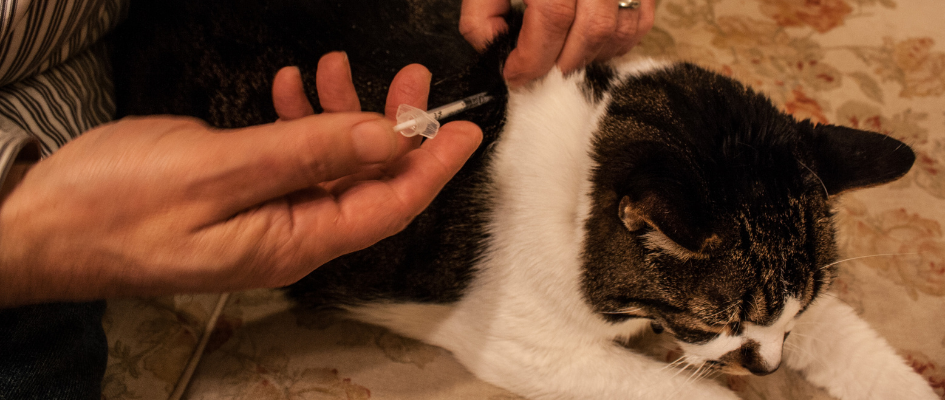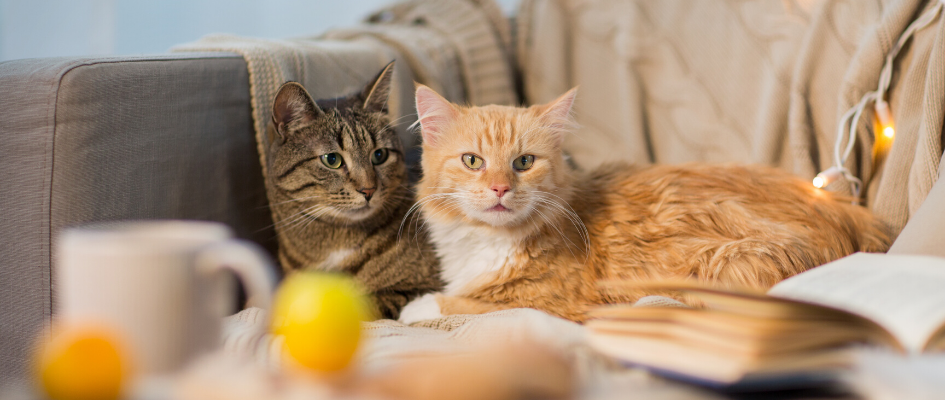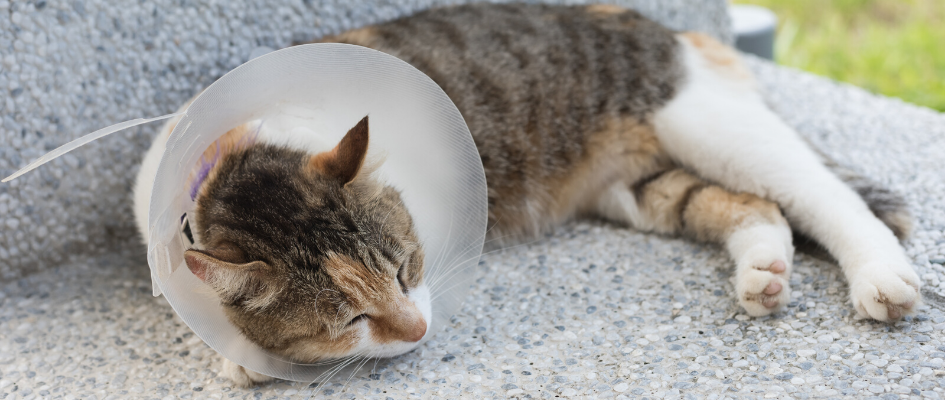What is it?
Diabetes mellitus is a common disease where sugar (glucose) in the blood is unable to enter the cells of the body due to problems with insulin. This means the cells have no energy and feel like they’re starving even though there is plenty of sugar available. Cats usually get insulin resistant diabetes (equivalent to Type 2 diabetes in humans). This occurs when, although the pancreas is making insulin, the cat’s body cells are not responding normally to it. The result is that the blood sugar levels climb and climb, but the cells cannot use it.
Why is it important?
Untreated diabetes will eventually result in coma and death, either due to brain damage from cerebral dehydration (hyperosmotic coma), or metabolic collapse (diabetic ketoacidosis or DKA). Cats that are treated and stabilised have a good prognosis. If the underlying cause of insulin-resistance can be resolved cats can go into remission, meaning they no longer need treatment.
What’s the risk?
Diabetes is more common in middle-aged to older, male, indoor/inactive and Burmese cats. It has also been linked to long-term steroid medication use, chronic pancreatitis, acromegaly, and Cushing’s disease. However, obesity is probably the most important single risk factor.
What happens to the cat?
Classic symptoms for diabetes include weight loss despite an initially good appetite, increased drinking/urination, walking flat footed (like humans) and smelly breath. In later stages, untreated cats can enter diabetic ketoacidosis (DKA) which causes anorexia, vomiting, lethargy and eventually a coma which can lead to death.

How do you know what’s going on?
Your vet will be suspicious of diabetes based on the history and clinical signs you tell them as well as their examination. One single test alone, however, cannot usually be used to diagnose diabetes and sometimes repeated testing over several days is required. This is because there are many other factors, including severe stress, that can lead to a temporarily high blood glucose level.
To check for diabetes, your vet will perform a blood test to assess the blood glucose level. If this is high, they will often then check for sugar in the urine (glucosuria) which should be negative in a healthy and non-diabetic cat. A further blood test called fructosamine can be used to check the average blood glucose level for the last couple of weeks to make sure your cat has consistently had high sugar levels indicating diabetes. The urine will also be assessed for signs of ketones which are found in DKA and some vets can also test for ketones in the blood.
Urine may need to be cultured to check for a secondary infection which is common due to the high sugar content. Other diseases can cause and be associated with diabetes and these may also be checked for, particularly if your cat is not responding well to treatment. These include pancreatitis (inflammation of the pancreas), acromegaly (a growth hormone tumour) and Cushing’s disease (steroid producing tumour, although this is rare in cats).
What can be done?
Diabetic cats that present with ketones in their blood/urine usually require hospitalisation for intravenous fluid therapy (a drip) and treatment with short-acting insulin to stabilise them. Once stable, diabetic patients can be treated at home provided the patient is compliant and the owner is willing.
Diabetes can be treated with long-acting insulin injections given under the skin 1-2 times a day. There are different types of insulin and methods of injecting insulin available and your vet will go through the options with you. Many owners find the idea of injecting their cat daunting, however, your vets and vet nurses will go through the process and practise with you until you feel confident. It is important that you follow a strict routine, giving the insulin and feeding your cat at the same time every day.
Food is typically given at the time of injection and not in between as this can result in poor control. In many cases, weight loss and a low carbohydrate diet are beneficial and can improve the chances of your cat going into remission. Response to insulin is monitored using blood glucose tests/curves and fructosamine (see above) and your cat’s dose will be adjusted accordingly.
Cats with poor control of their diabetes will show symptoms as described above. Cats that are too well controlled because of too much insulin or going into remission can show signs of low blood sugar (hypoglycaemia). This includes lethargy, trembling/twitching, wobbling when walking, and depression. In severe cases, hypoglycaemia can result in seizures and a coma. If you are worried your cat is hypoglycaemic then give them something to eat if they are able to swallow, if not then rub some honey on their gums and seek veterinary attention immediately.
Achieving good control of diabetes within the first six months markedly increases the chance of remission. However, cats that have gone into remission can still become diabetic again in the future.
How can I protect my pet?
You can help decrease the chance of your cat getting diabetes by minimising the risk factors where possible. Try to keep your cat slim and active, as overweight cats are over 4.5 times more likely to get diabetes. Feeding a diet which is lower in carbohydrates can help prevent obesity and often results in lower blood glucose levels after eating, compared to many commercial diets.
If you have any questions please get in touch with your local Goddard practice!



